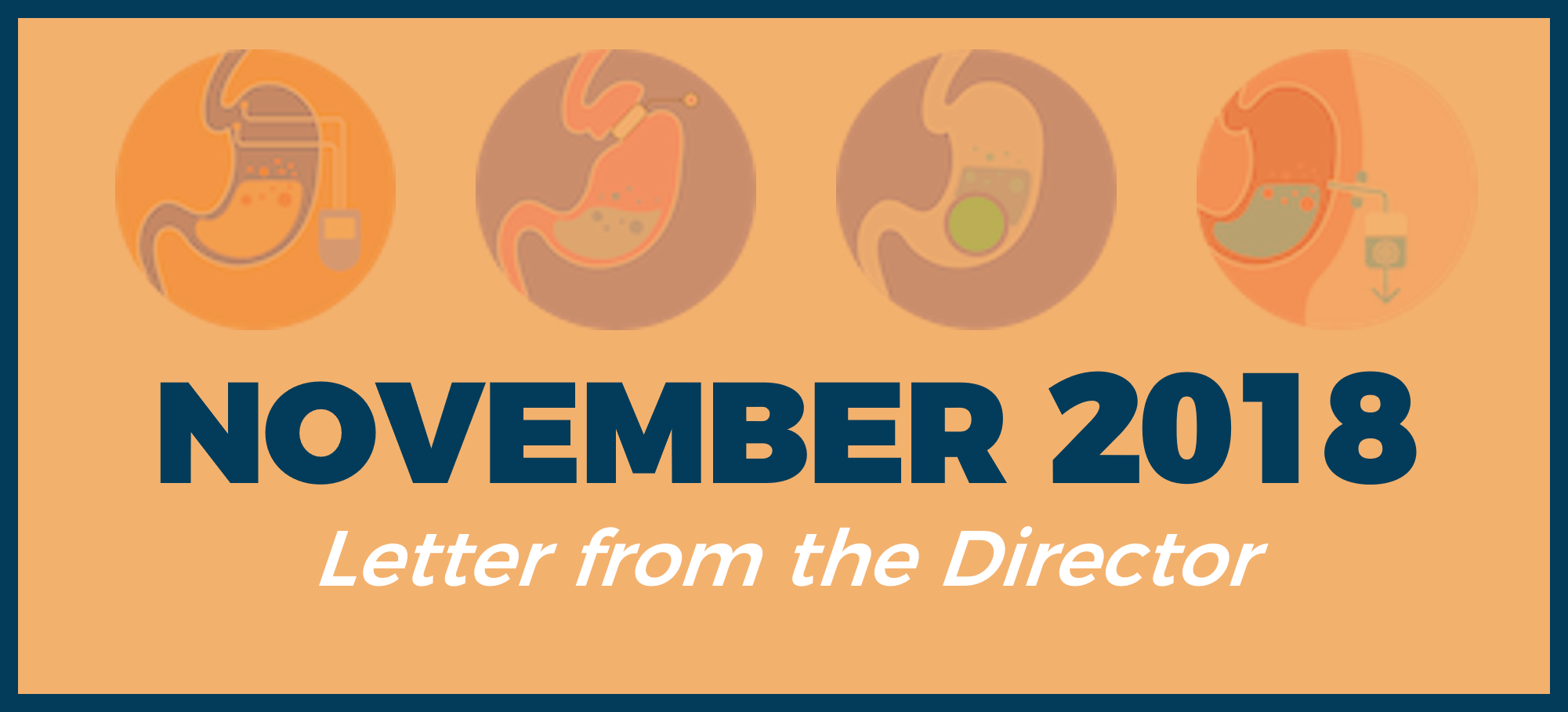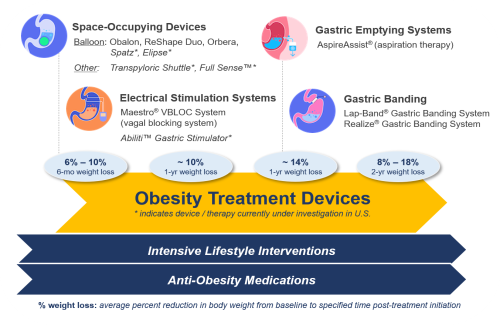Expanded coverage for conventional obesity treatment modalities—intensive lifestyle interventions, anti-obesity medications, and bariatric surgery—is a positive development for individuals with obesity. However, there is no one-size-fits-all approach to obesity management, and not all individuals find success with these standard treatments. The emergence of several innovative FDA-approved obesity treatment devices may offer an additional therapeutic option for adults seeking obesity care. Designed to mimic the effects of restrictive and bypass surgeries, preliminary data suggest that obesity treatment devices typically produce 10-20% weight loss at one year that may be accompanied by significant metabolic improvement (Figure 1).
Use of obesity treatment devices is not without controversy. The FDA standard for medical device approval is less rigorous than that for anti-obesity medications. Furthermore, more long-term outcomes and data on complications are needed before these devices can be included in routine clinical practice.
In addition to the once-popular adjustable gastric banding systems, current FDA-approved obesity treatment devices include the following:
-
Intragastric balloons [BMI ≥ 30 | 6-month weight loss: 6% - 10%]
These temporary devices (up to 6 months) can include one, two, or three balloons that fill space in the stomach. They can be placed via an ingestible capsule attached to a thin catheter or endoscopically. Once placed, they are filled with gas or saline and sealed. All balloons currently approved by the FDA were designed to address concerns (e.g. bowel obstruction) that led to withdrawal of an earlier model in 1992. However, adverse events such as vomiting and gastric ulceration are still common among some of the new models. Balloons are increasingly used to prepare gastric bypass patients with very high BMIs for surgery. Device placement is performed as an outpatient procedure and takes about 30 minutes.
Average cost: $8,250. -
Vagal blocking system [BMI of 35-45 | 1-year weight loss: 10%
The v-Bloc system is laparoscopically implanted into the abdomen to block nerve activity between the brain and the stomach, reducing food intake and promoting satiety by delaying food processing (i.e. tricking the brain into thinking the stomach is full) and gastric emptying. Device placement is performed as an outpatient procedure and takes about 1 hour.
Average cost: $18,700. -
Gastric emptying system [BMI of 35-55 | age ≥ 22 years | 1-year weight loss: 14%
An endoscopically-placed tube connecting the inside of the stomach to a port resting against the skin of the abdomen is used to empty up to 30% of stomach contents after each meal, causing patients to absorb fewer calories. To ensure the device is used under care of a medical professional and prevent misuse, the device automatically locks out after 115 aspirations, requiring a clinic visit to obtain a new counter. Initial device placement is performed as an outpatient procedure and takes about 15 minutes. A 4-year post-market study of European registry data suggests that the device is safe for prolonged use and may produce average weight loss greater than that found in the U.S. trial (mean of 20% at year 2). Average cost: $10,600.
Several other minimally-invasive therapies under current investigation may obtain FDA-approval within the next few years, including two additional intragastric balloons designed for 12-month placement (Spatz, Elipse), two non–balloon space-occupying devices (TransPyloric Shuttle, Full Sense™ Device), additional gastro-electric stimulating devices (e.g. Abiliti™, DIAMOND System™), and several small bowel endoscopic devices (e.g. EndoBarrier™, SatiSphere™).
As with other non-surgical treatment modalities, the risk of weight regain is of primary concern following device removal. Implementation of a long-term weight management strategy is essential to sustaining the weight loss and any concomitant reductions in obesity-associated comorbidities produced by a device. Although pervasive weight bias, inadequate provider training, and exclusion from insurance coverage will limit utilization of obesity treatment devices for the foreseeable future, the reversibility, relative efficacy, safety, and affordability of approved obesity treatment devices may render them useful options to narrow the obesity treatment gap.



